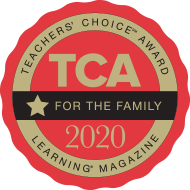Materials
- balls or wheeled objects (toy cars, etc.) of various sizes and weights
- ramp materials (cardboard tubes of different lengths—paper towel, toilet paper, wrapping paper, mailing tubes; cut some of the tubes horizontally to form open troughs. Flat pieces of cardboard, foam core, and/or wood also work well.)
- objects to prop up ramps (books, blocks)
- objects to serve as obstacles (cardboard tubes, toy cars, blocks, pencils, empty spice jars, plastic cups and bottles, etc.)
- clipboard and pencil
Key Science Concepts
- When a rolling or sliding object hits an obstacle, it will stop or slow down and its direction may change.
- When a stationary object is hit by a rolling or sliding object, the force may knock the object over or cause it to move depending on how fast the moving object is going and how heavy it is.
Vocabulary
Encourage children to use terms such as ramp, obstacle, roll, bounce, bump, swerve, heavier, lighter, steeper, and less steep, and science process words such as observe, predict, test, record, compare, same, different, and change. Emphasize obstacle: an object that gets in the way that you have to get around or over.
Directions
- Start with a fairly open exploration. Help children place a group of obstacles—such as paper tubes set upright (with objects balanced on top, if you want), blocks, toy cars, or other balls—in front of a ramp, in the path of a rolling ball.
- Talk about what happens when the ball rolls down the ramp and hits an obstacle. What happens to the obstacle? What happens to the movement of the ball? Does the same thing happen every time the ball rolls down the ramp? If not, why do they think it varies? Record children’s observations, ideas, and questions on clipboard.
- Then get the children thinking like scientists. Have them change one variable and observe what happens. Use the same ramp at the same incline, but change the weight and size of the balls— some that are heavier or lighter. Pose a challenge: Which balls will knock down this block tower? Which will leave it standing?
Reflect and Share
Encourage students to describe their experiment: Which balls did they try? Which ones worked and which ones didn’t work? Take photos or videos of the obstacle courses or have children draw pictures of them.

 Español
Español








